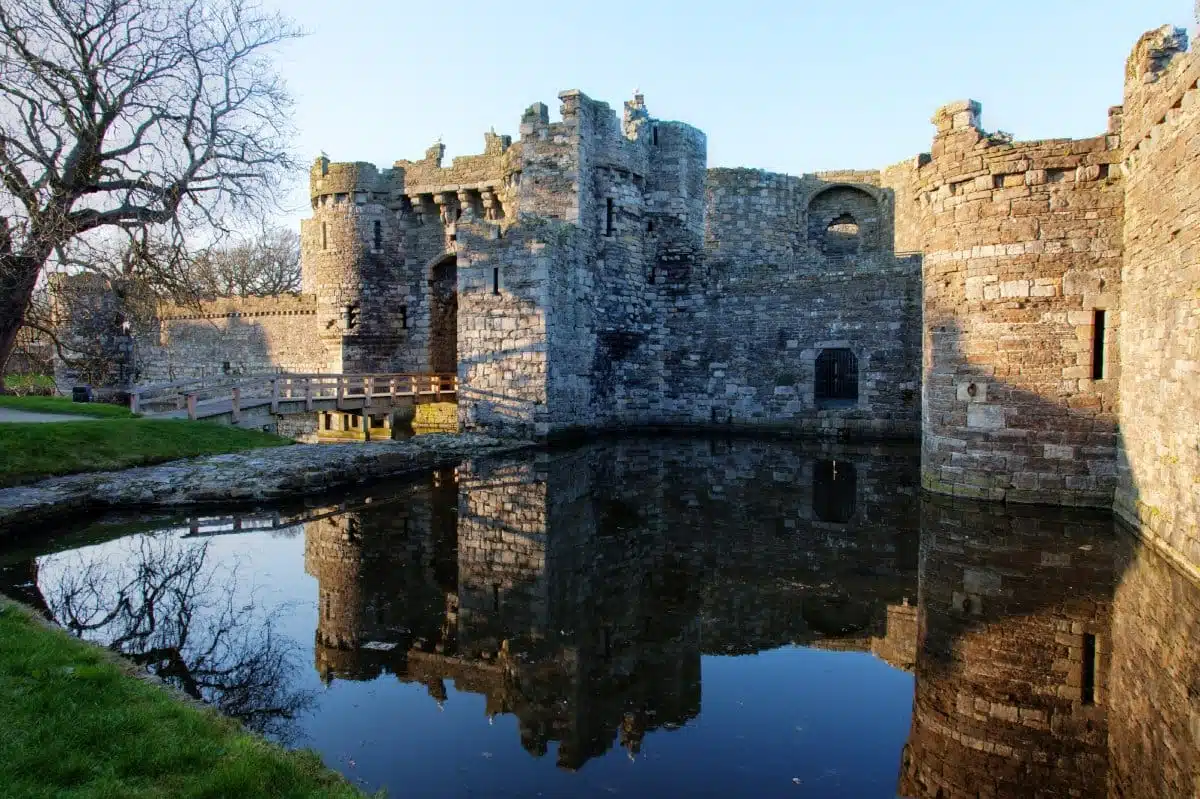Wales, often called the “castle capital of the world,” is steeped in history and grandeur, with its landscape dotted with some of the most impressive and well-preserved castles in Europe. Each castle tells a story of a bygone era, from the Norman conquests to the battles of Welsh princes striving to reclaim their land. This guide explores nine of Wales’s most historic castles, offering an insight into their architecture and the tumultuous history that shaped this nation. From the imposing fortresses of North Wales to the strategic keeps of the South, these castles are the living history of Wales, inviting you to explore their ruins, towers, and tales.
1. Caernarfon Castle
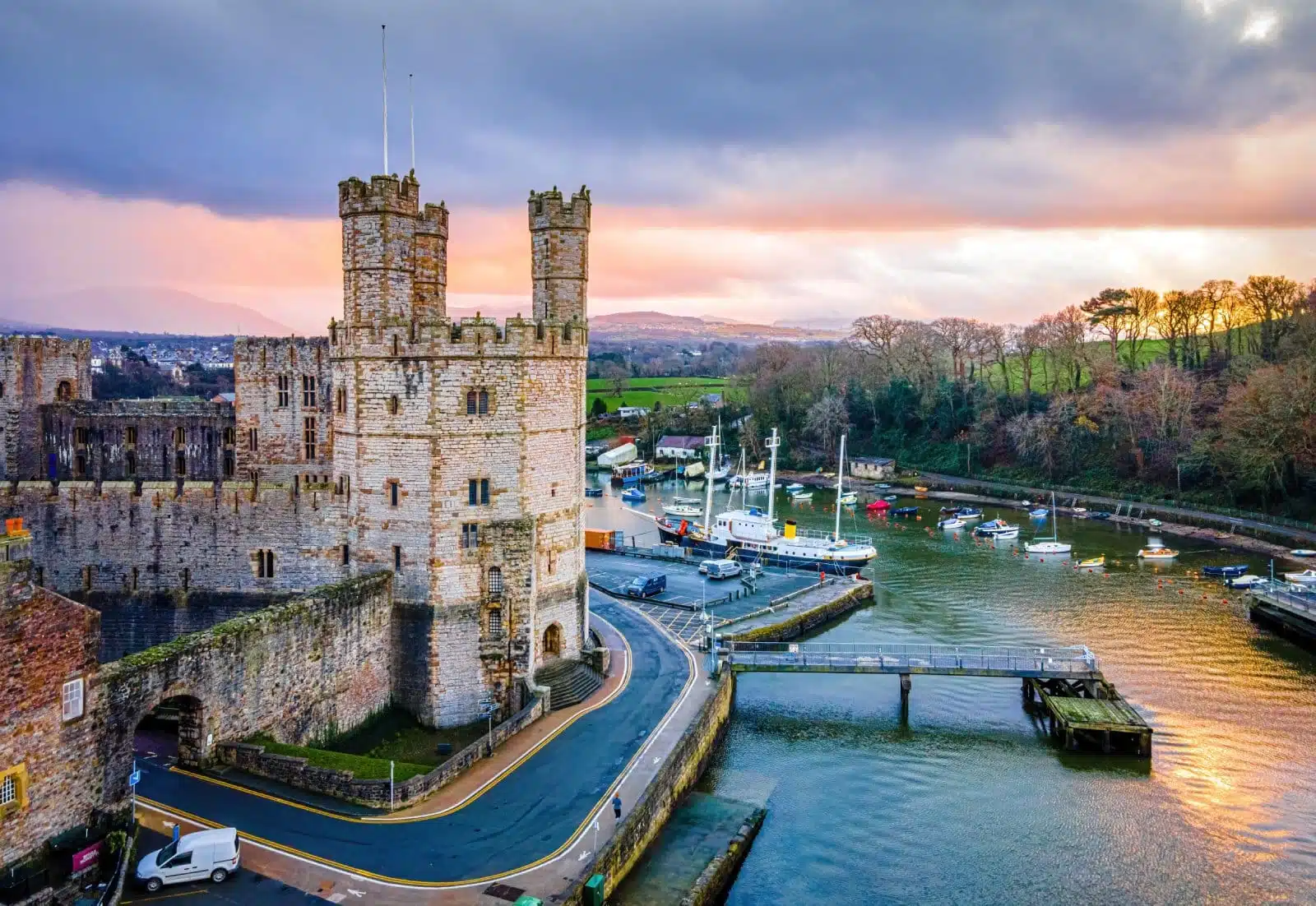
Image Credit: Shutterstock / Alexey Fedorenko
Caernarfon Castle stands as a monumental symbol of the power and ambition of Edward I of England. Constructed in the 13th century as a seat of power and a declaration of English dominance over Wales, its imposing walls and unique polygonal towers dominate the landscape of Caernarfon. The castle’s design, inspired by the walls of Constantinople, was meant to convey the message of an unassailable fortress. It was also the birthplace of the first English Prince of Wales, further cementing its role in the contentious history between England and Wales. Today, Caernarfon Castle is a UNESCO World Heritage Site, recognized for its architectural and historical significance.
Insider’s Tip: Don’t miss the opportunity to walk the castle walls, offering panoramic views of the town and the Menai Strait. The Eagle Tower, with its three turrets, is particularly impressive and provides some of the best photo opportunities.
When to Travel: The best time to visit Caernarfon Castle is spring (March to June) or early fall (September to October) when the weather is mild and the crowds are thinner.
How to Get There: Caernarfon is easily accessible by road from major cities in North Wales. The nearest train station is in Bangor, 9 miles away, with regular bus services to Caernarfon.
2. Caerleon Castle
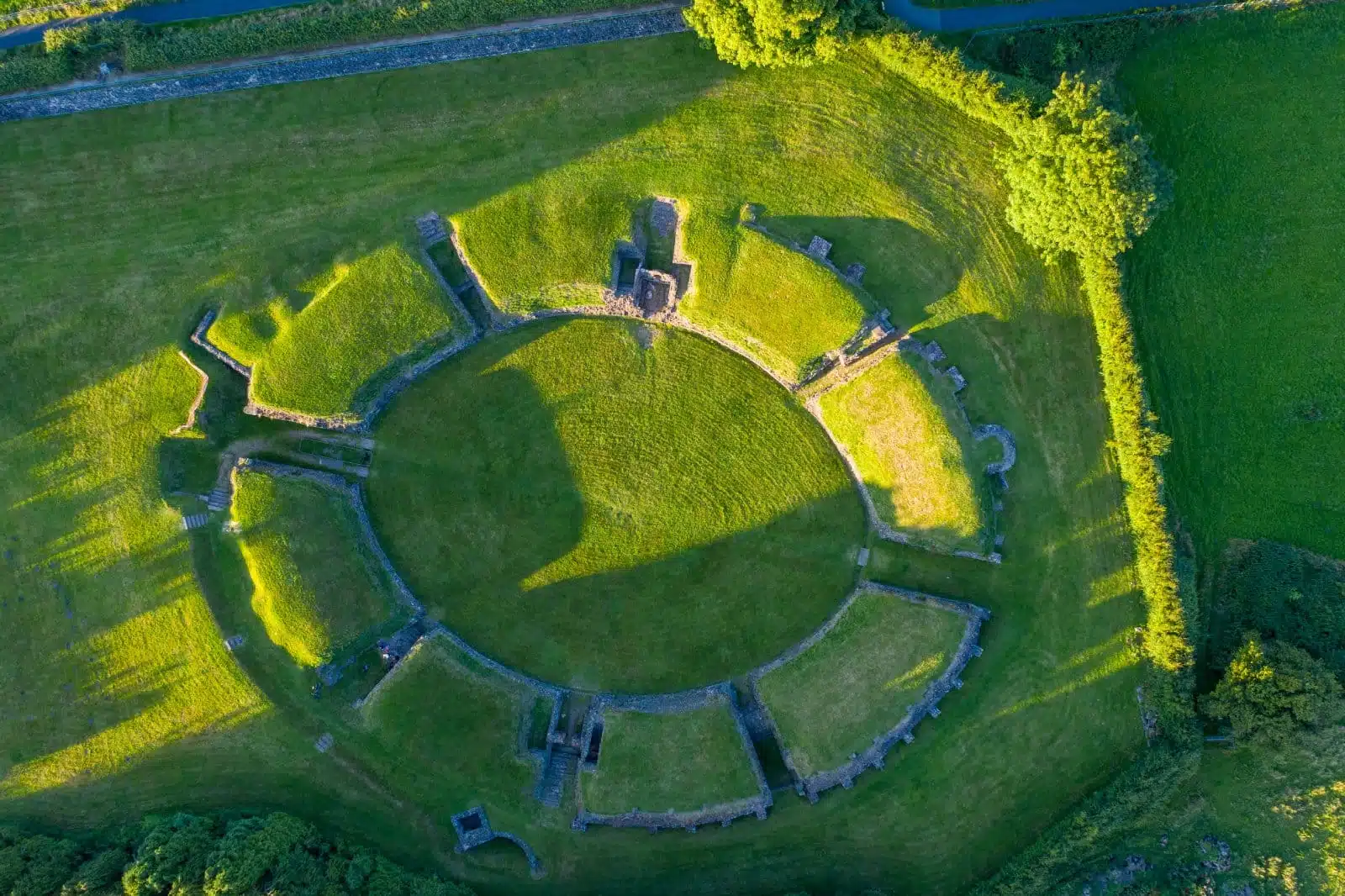
Image Credit: Shutterstock / steved_np3
Nestled in the historically rich town of Caerleon, South Wales, Caerleon Castle, often less spoken of amidst Wales’ more formidable fortresses, carries a unique charm and a deep historical significance. Unlike the towering keeps and battlements that characterize many of Wales’ medieval structures, Caerleon’s remains are more subtle, reflecting its role throughout history from Roman times through the medieval period. Known primarily for its extensive Roman history, including one of Britain’s three permanent Roman fortresses, Caerleon provides a different perspective on the concept of a ‘castle.’ The remnants of this past, including the well-preserved Roman baths, amphitheater, and barracks, offer a fascinating glimpse into ancient life, while the medieval fortifications that followed tell tales of a turbulent era of Welsh princes and Norman conquests. This site invites visitors to walk through layers of history, exploring the convergence of Roman ingenuity and medieval strategy in the beautiful Welsh landscape.
Insider’s Tip: Before exploring the castle ruins, visit the nearby National Roman Legion Museum to gain deeper insights into Caerleon’s Roman past. The museum houses an impressive collection of artifacts that bring the history of Roman Wales to life.
When to Travel: The ideal times to visit Caerleon Castle and its surrounding historical sites are spring (March to June) and early autumn (September to October). These periods offer pleasant weather for outdoor exploration and avoid the peak tourist season, allowing for a more personal experience of the site.
How to Get There: Caerleon is situated just outside Newport, making it easily accessible by road and public transport. By car, Caerleon is a short drive from Newport city center, following signs for the Roman Fortress and Baths. Regular bus services run from Newport to Caerleon for those relying on public transport, dropping visitors close to the castle and museum. The nearest train station is in Newport, with direct services from Cardiff, Bristol, and London.
3. Harlech Castle
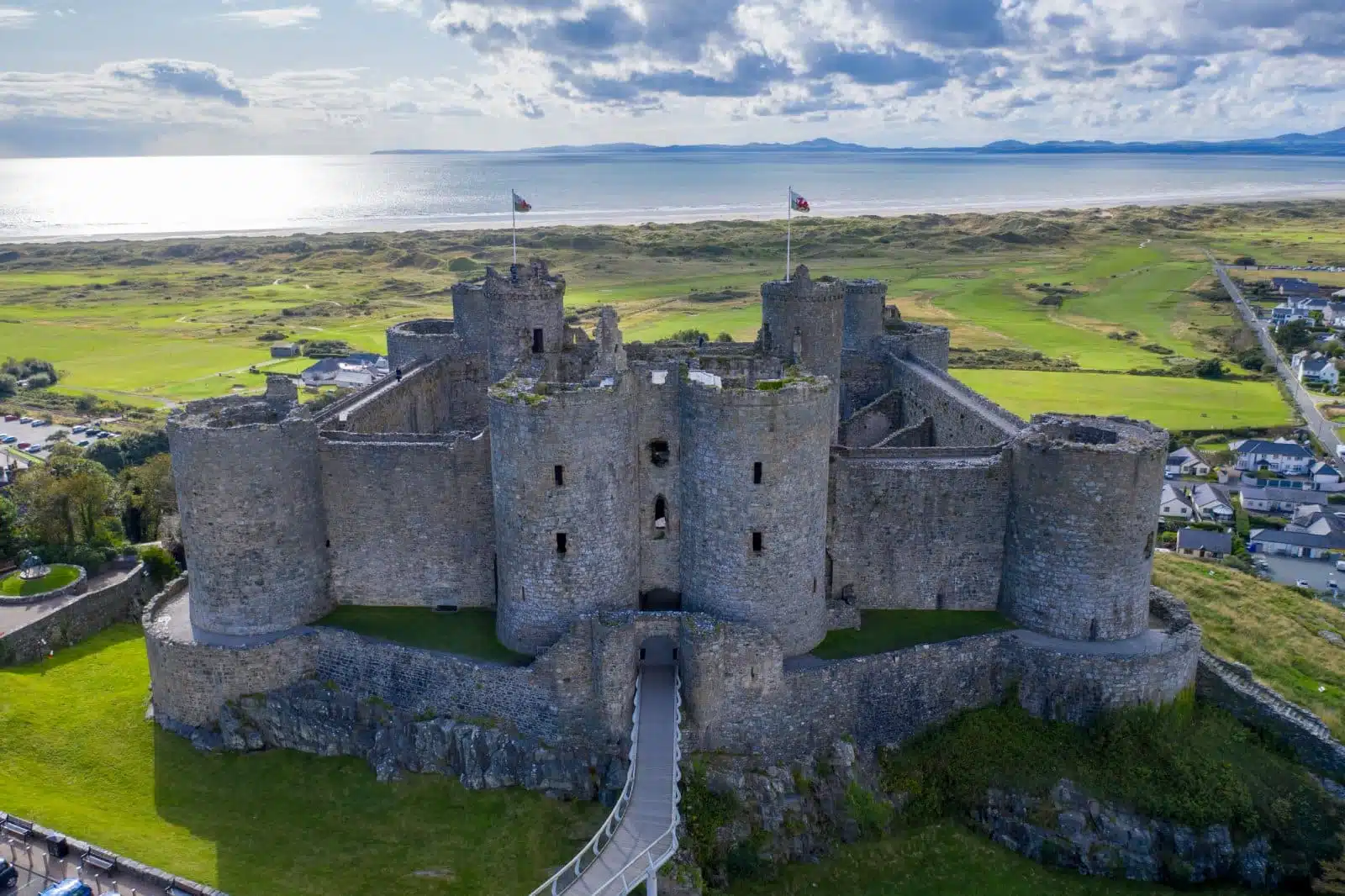
Image Credit: Shutterstock / Marchaugh
Perched dramatically on a cliff overlooking the Irish Sea, Harlech Castle highlights medieval military architecture and the tumultuous history of Wales. The castle built by Edward I during his invasion of Wales has stood since the late 13th century, embodying the power struggles that have shaped Welsh history. Its strategic position, innovative design, and the sheer scale of its fortifications offer a fascinating glimpse into the past. The castle’s battlements offer breathtaking views of the sea and the surrounding countryside, making it a picturesque spot for history enthusiasts and casual visitors.
Insider’s Tip: Attend one of the castle’s medieval reenactments or musical events to see the historic walls come to life with the sounds and sights of the past.
When to Travel: The best time to visit Harlech Castle is during the spring or early autumn months when the weather is mild and the tourist crowds are thinner.
How to Get There: Harlech is accessible by train from major cities in Wales, with the castle just a short walk from Harlech station. By road, it’s well-signposted and offers a scenic drive through the Welsh countryside.
4. Conwy Castle
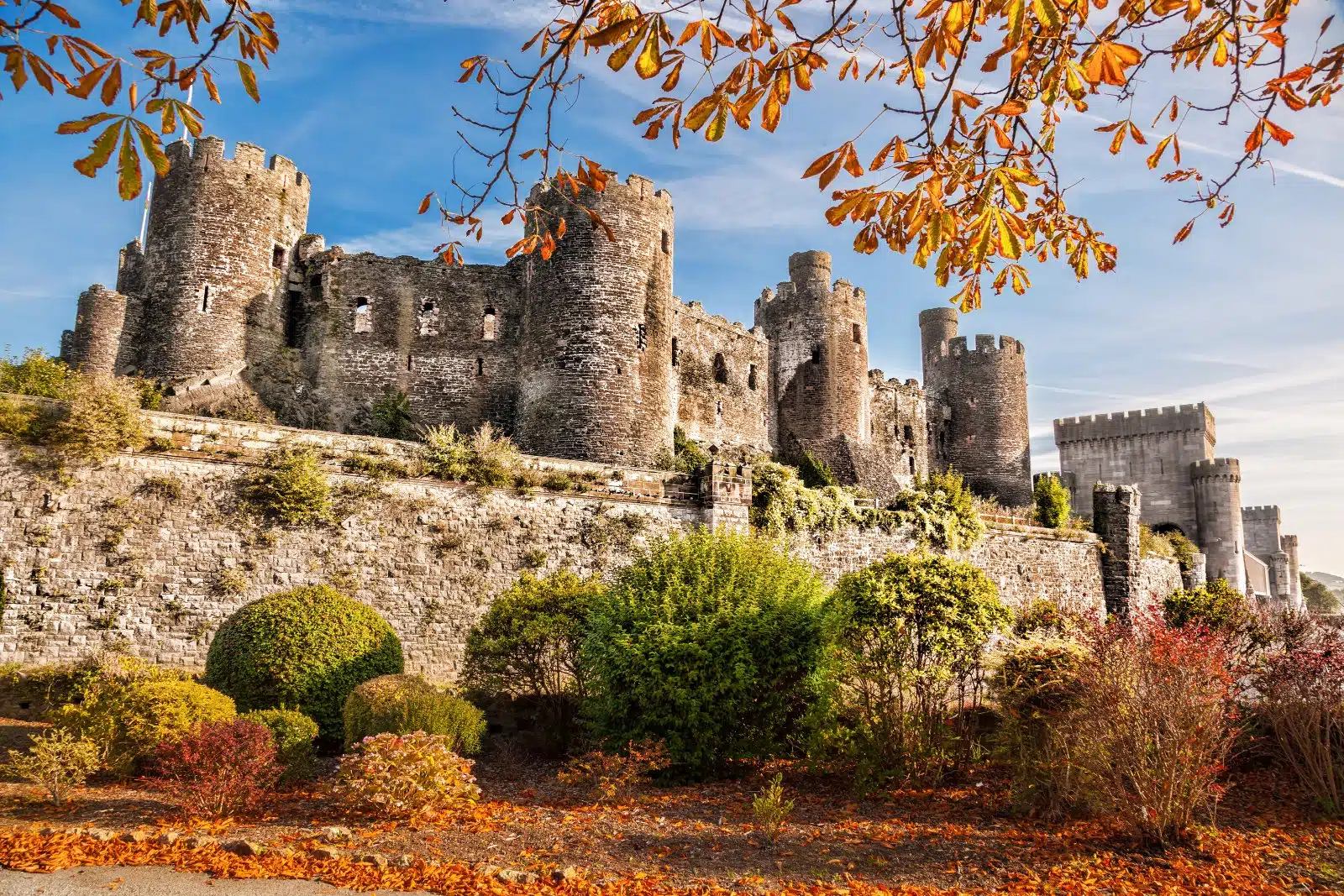
Image Credit: Shutterstock / Tomas Marek
Conwy Castle, a masterpiece of medieval military architecture, stands as a formidable testament to Edward I’s ambitions in Wales. Constructed between 1283 and 1289, this UNESCO World Heritage site dominates the landscape with its eight massive towers and well-preserved curtain walls. The castle’s strategic location on the Conwy Estuary allowed for tight control over land and sea routes, a crucial advantage during times of conflict. Visitors today can explore the castle’s interior, from the royal chambers to the deep dungeons, and walk atop the walls that offer stunning views of the town, estuary, and surrounding countryside. Conwy Castle’s design and preservation make it an exemplary study of medieval fortification, reflecting the history of conquest and resistance that defines Wales.
Insider’s Tip: Don’t miss the opportunity to walk Conwy’s nearly intact town walls, which provide a unique perspective on the castle and the town it was built to protect.
When to Travel: The best months to visit Conwy Castle are between April and October, avoiding the peak summer crowds while enjoying mild weather that is perfect for walking the castle walls and exploring the town of Conwy.
How to Get There: Conwy Castle is easily accessible by train, with Conwy’s railway station just a few minutes’ walk from the castle. By car, Conwy is on the North Wales coast and is reachable via the A55 expressway. Parking is available in the town.
5. Beaumaris Castle
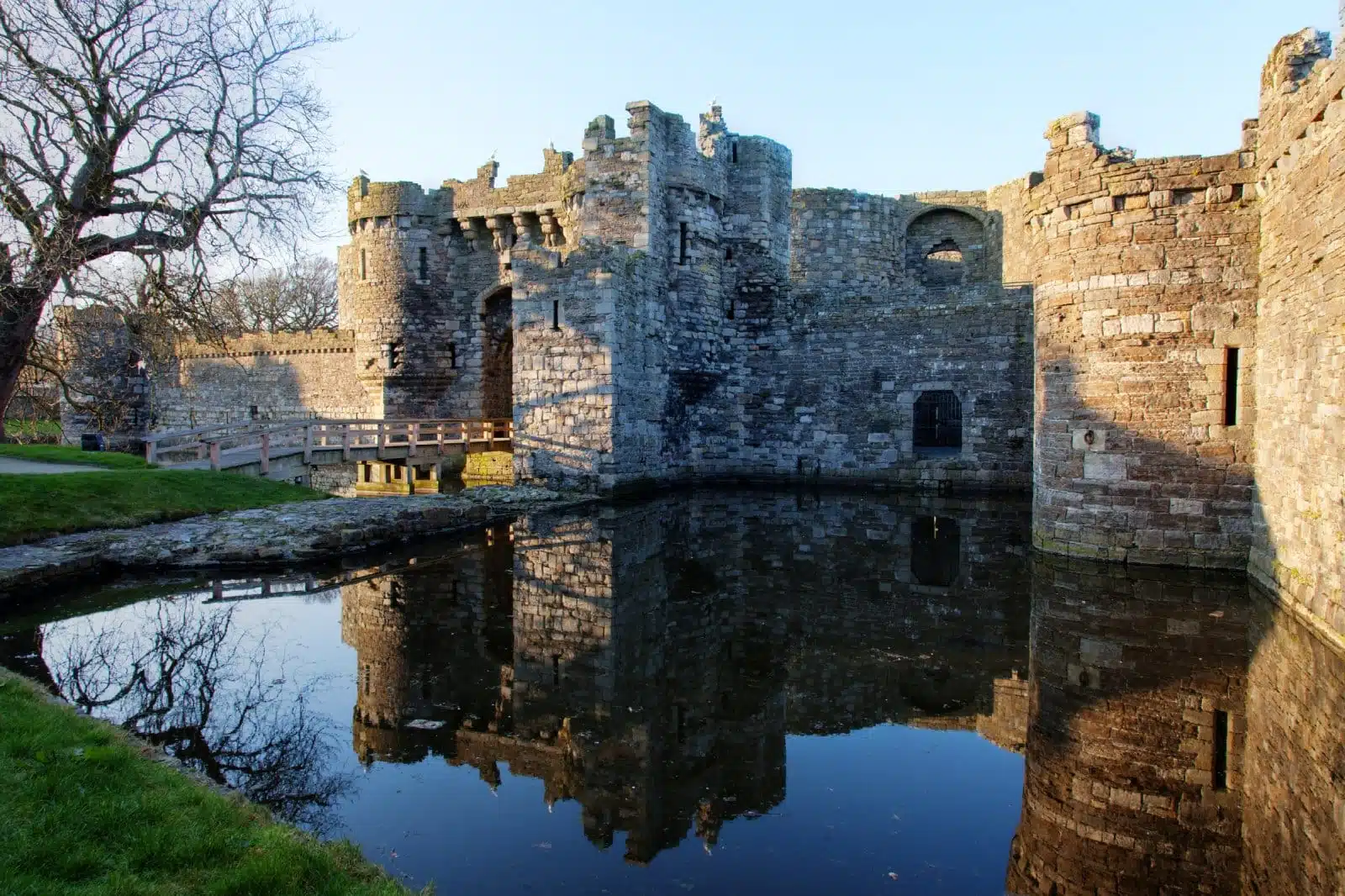
Image Credit: Shutterstock / Gail Johnson
Beaumaris Castle, located on the Isle of Anglesey, is celebrated as the most technically perfect castle in Britain, with its concentric design showcasing the pinnacle of medieval military architecture. Despite never being completed, Beaumaris Castle’s symmetry and formidable defenses illustrate Edward I’s vision of an impregnable fortress. The castle features a water-filled moat, a series of gatehouses, and a network of walls within walls, making it a fascinating site for those interested in the evolution of castle design. Today, visitors can wander through the spacious inner ward, climb the towers for panoramic views, and imagine the castle as it might have been if Edward’s ambitions had been fully realized.
Insider’s Tip: Take a guided tour to fully appreciate the architectural innovations and historical context that make Beaumaris Castle a masterpiece of its time.
When to Travel: Visiting Beaumaris Castle is most pleasant from late spring to early fall (May to September), offering the chance to experience the castle and the Isle of Anglesey under the best weather conditions.
How to Get There: Beaumaris Castle is located on the Isle of Anglesey, North Wales. The nearest major town is Bangor, from which you can cross the Menai Strait via the A5 and A545 roads. Public transport options include buses from Bangor. Anglesey is also accessible by train, with the nearest station in Llanfairpwll, followed by a bus journey to Beaumaris.
6. Pembroke Castle
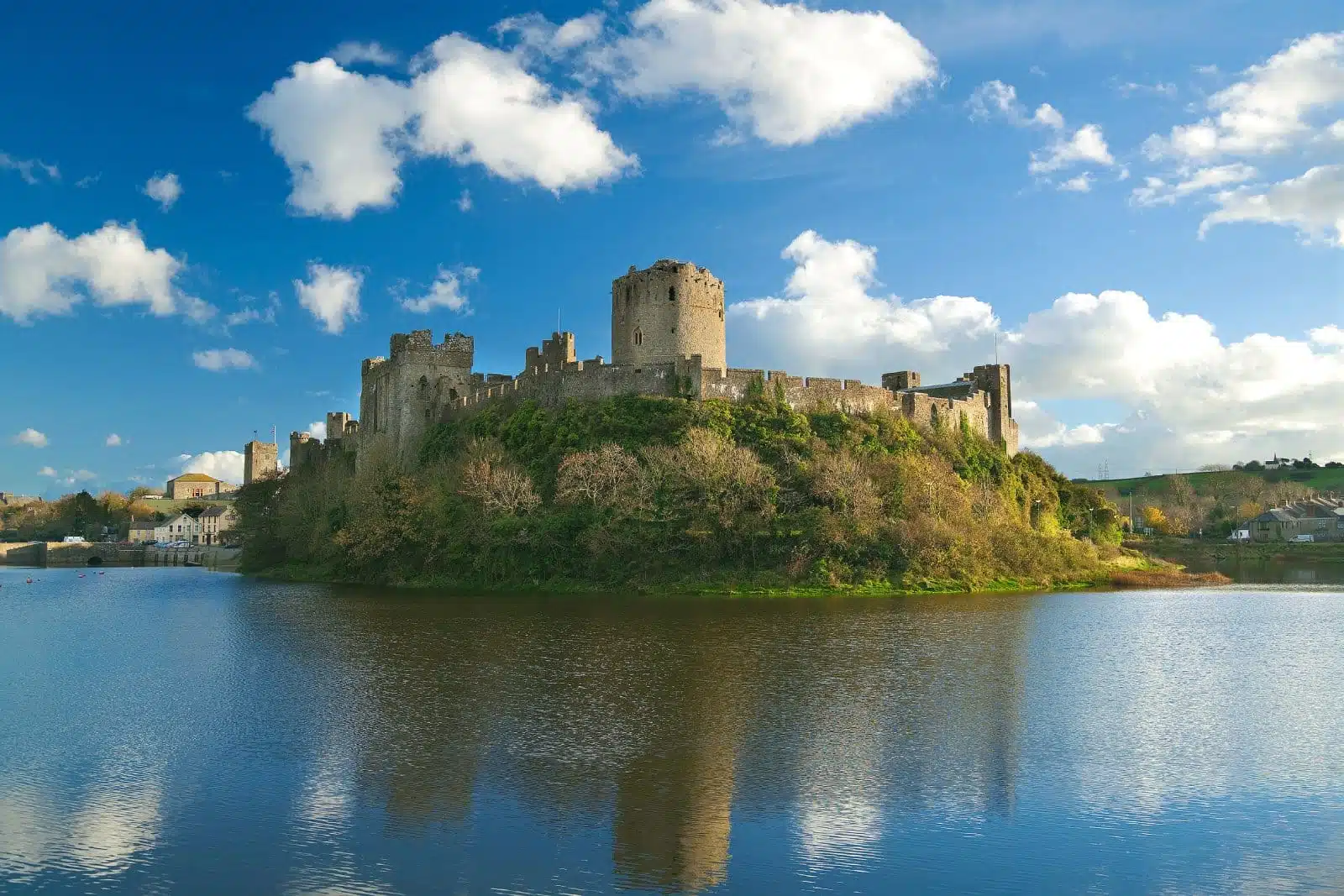
Image Credit: Shutterstock / Billy Stock
Pembroke Castle, the birthplace of Henry VII, the first Tudor king of England, is a striking feature of the Pembrokeshire landscape. This mighty fortress boasts a complex history, from its origins in the 11th century through its pivotal role in the Wars of the Roses. The castle’s most remarkable feature is the massive cylindrical keep, which offers breathtaking views from its summit. Pembroke’s strategic position on a rocky promontory surrounded by water made it one of Wales’s most formidable defensive sites. Today, visitors can explore the labyrinth of passageways, climb the towers, and delve into the rich history of a castle that has witnessed some of the most dramatic events in Welsh and English history.
Insider’s Tip: Explore the Wogan Cavern beneath the castle, an atmospheric natural cave that humans have used since the Stone Age.
When to Travel: The ideal time to visit Pembroke Castle is from late spring to early autumn (May through September), when the weather is most favorable for exploring the extensive grounds and enjoying the scenic views of the surrounding countryside.
How to Get There: Pembroke Castle is located in Pembrokeshire, West Wales. The nearest train station is Pembroke, with direct services from Swansea and Cardiff. By car, Pembroke is well-connected via the A40 and A477 roads. Parking is available in the town, with a short walk to the castle.
7. Raglan Castle
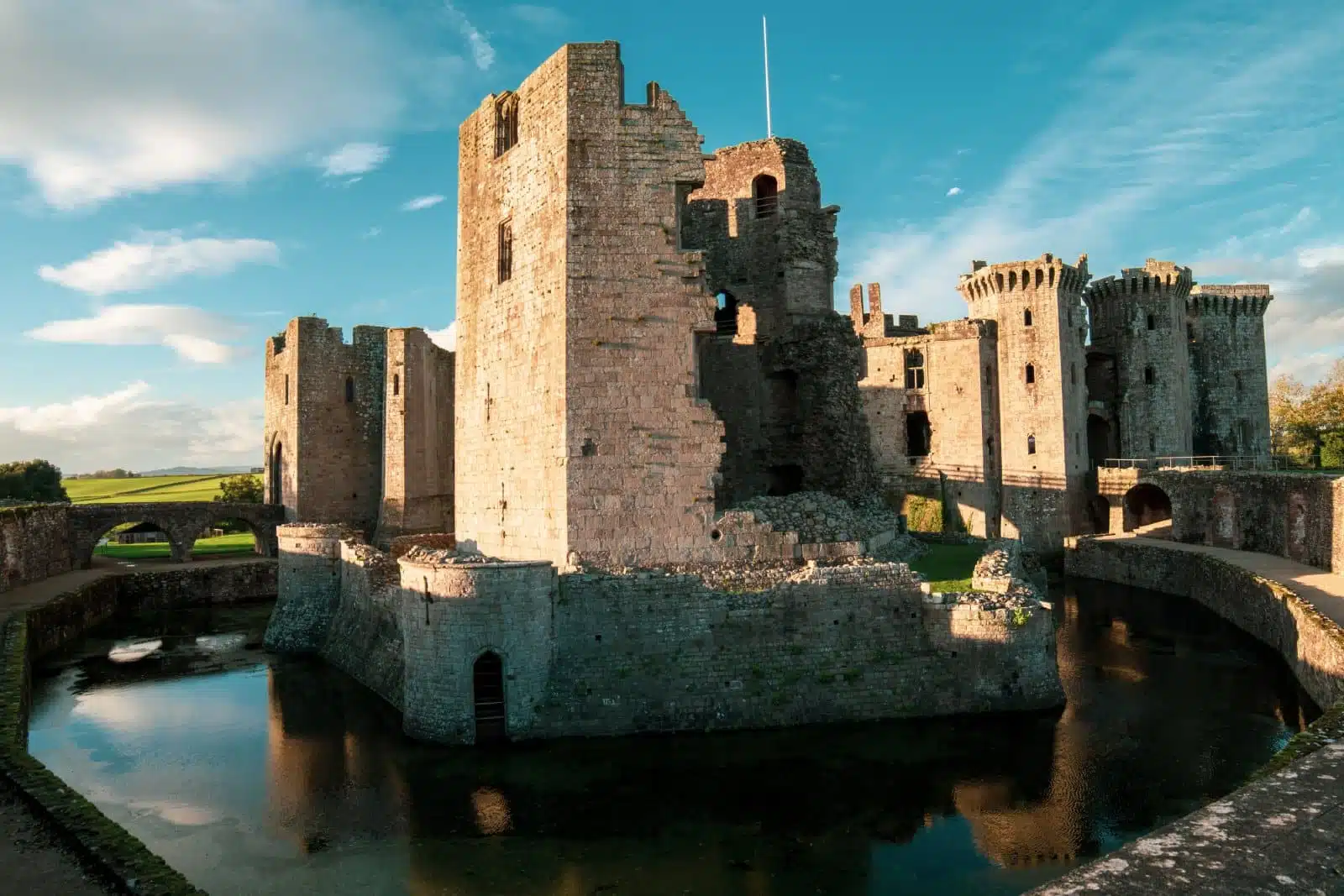
Image Credit: Shutterstock / Strikernia
With its distinctive Tudor architecture, Raglan Castle represents a departure from the military fortresses of earlier periods to a more comfortable and stylish residence that still incorporated formidable defenses. Built in the 15th century, Raglan was the setting for lavish entertainment and was renowned for its luxury until its siege and ruin during the English Civil War. The Great Tower, surrounded by a moat, remains an imposing sight, while the castle’s state apartments and terraced gardens hint at its past grandeur. Raglan Castle offers a glimpse into the lifestyle of the Welsh nobility on the eve of the modern era, blending military might with the emerging Renaissance aesthetic.
Insider’s Tip: Attend one of the castle’s reenactment events or jousting tournaments to see Raglan come alive with the sights and sounds of its heyday.
When to Travel: The optimal time to visit Raglan Castle is spring and summer (April to August), when the weather allows for a comfortable exploration of its ruins and beautiful surroundings.
How to Get There: Raglan Castle is situated in the county of Monmouthshire, southeast Wales. By car, it can be reached via the A40. The nearest train stations are in Abergavenny and Newport, from which you can take a bus or taxi to Raglan.
8. Caerphilly Castle
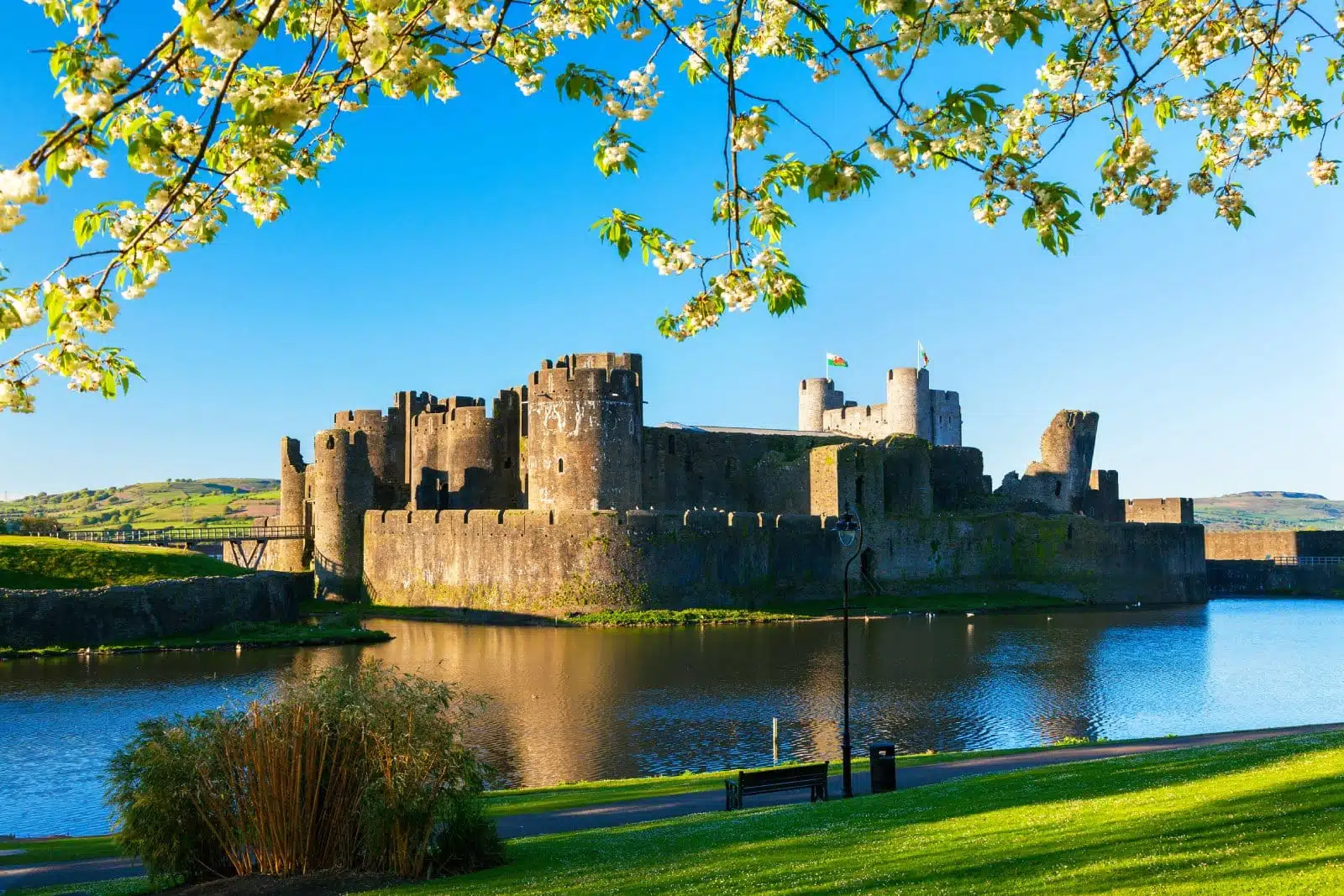
Image Credit: Shutterstock / Billy Stock
Caerphilly Castle, the largest castle in Wales and the second-largest in Britain showcases medieval engineering, known for its extensive water defenses and formidable concentric rings of walls. Built in the 13th century by Gilbert de Clare, the castle responded to the ongoing Welsh struggles for independence. Its most famous feature is the leaning tower, which out-leans the Tower of Pisa, a result of Civil War sieges. Caerphilly Castle’s restoration efforts have made it a prime destination for exploring medieval military architecture, offering interactive exhibits, reconstructed living quarters, and dramatic events that bring its history to life.
Insider’s Tip: Explore the castle after dark with one of the ghost tours to discover its legends and spookier aspects.
When to Travel: The best times to visit Caerphilly Castle are from spring to autumn (March to October), with the castle hosting various events and reenactments.
How to Get There: Located just north of Cardiff, Caerphilly Castle is accessible by train from Cardiff Central to Caerphilly Station, with a short walk to the castle. By road, the castle is near the A469 and has parking available onsite or nearby in Caerphilly town.
9. Powis Castle

Image Credit: Shutterstock / Sinead_photography
Unlike the other fortresses on this list, Powis Castle is renowned for its world-class gardens, terraces, and opulent Baroque interiors. The castle, originally built circa 1200, has evolved over the centuries to become a treasure house of art and artifacts, including the Clive Museum collection of Indian art. The Italianate terraces, lush gardens, and deer park offer a peaceful contrast to the military origins of the site, making Powis a unique blend of historical periods and styles. The castle’s preservation and presentation of its interiors and landscaped exteriors provide a comprehensive look at the lifestyle of the Welsh aristocracy through the ages.
Insider’s Tip: Don’t miss the opportunity to see the famous Powis Castle yew hedges, some of Britain’s oldest and most elaborate.
When to Travel: Late spring through early autumn (May to September) is ideal for visiting Powis Castle, allowing visitors to enjoy the gardens in bloom and the warmer weather.
How to Get There: Powis Castle is near Welshpool, in Mid Wales. The nearest train station is Welshpool, where you can get a taxi to the castle. By car, Powis Castle is accessible via the A483, with parking available at the castle.
The Bottom Line
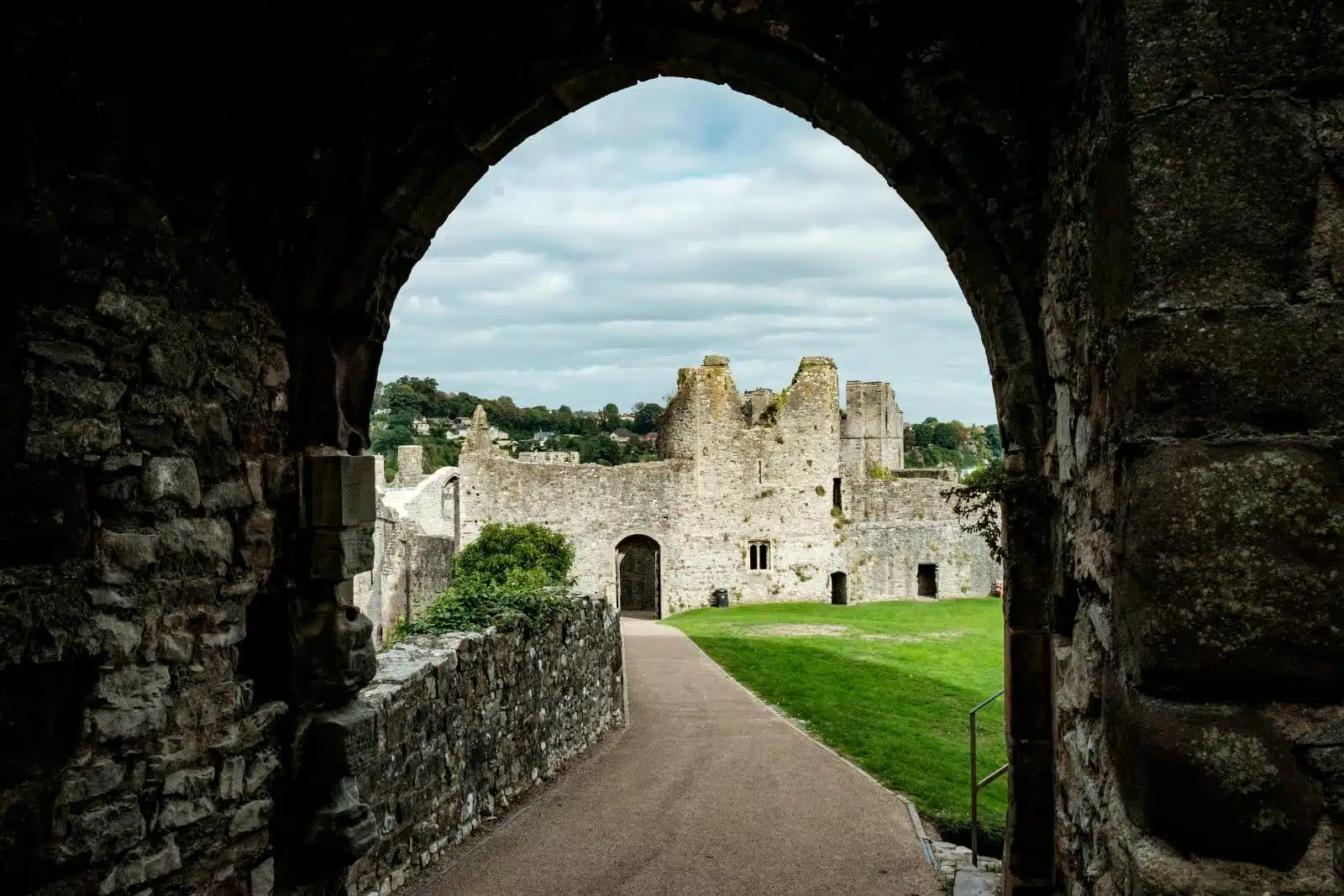
Image Credit: Pexels / Krisztina Papp
Wales’ historic castles are not merely stone and mortar; they are the keepers of stories, the witnesses of centuries of human ambition, conflict, and creativity. From the strategic fortifications of Conwy and Caernarfon to the architectural elegance of Powis and Raglan, each castle offers a unique window into the past. As you explore these ancient sites, you’re invited to step into the narrative of Wales itself, a land of heroes, battles, and beauty. Remember, each visit to these castles is a journey through time, where the echoes of history meet the tranquility of the present.
More From The Green Voyage
12 Best Practices for Sustainable Travel in 2024 – How to Travel With Minimal Environmental Impact
Unlocking Hotel Perks – A Traveler’s Guide to Maximizing Hotel Reward Programs for Optimal Benefits
Travel Hacks for Frequent Flyers – 6 Tips and Tricks to Make the Best of Air Travel
The post 10 Historic Castles of Wales 2024 first appeared on The Green Voyage.
Featured Image Credit: Shutterstock / Gail Johnson.
For transparency, this content was partly developed with AI assistance and carefully curated by an experienced editor to be informative and ensure accuracy.
Tips for Trip Success
Book Your Flight
Find an inexpensive flight by using Kayak, a favorite of ours because it regularly returns less expensive flight options from a variety of airlines.
Book Your Hotel or Special Accommodation
We are big fans of Booking.com. We like their review system and photos. If we want to see more reviews and additional booking options, we go to Expedia.
You Need Travel Insurance!
Good travel insurance means having total peace of mind. Travel insurance protects you when your medical insurance often will not and better than what you get from your credit card. It will provide comprehensive coverage should you need medical treatment or return to the United States, compensation for trip interruption, baggage loss, and other situations.Find the Perfect Insurance Plan for Your Trip
